Bonnet buffing is a rapid and effective way of cleaning a large surface area.
A cleaning product is deposited onto the surface as a mist then a round buffer (also called a “bonnet”) scrubs the mixture with a rotating motion. You’ll be familiar with the style of the machine as it looks like a typical floor buffer, but it rotates at half the speed.
There’s a difference between the bonnet buff method and dry-cleaning carpets. Within the bonnet buffer, there’s an oscillating pad which attracts dirt and is repeatedly rinsed and replaced. Consequently, it can be easy for inexperienced cleaners to accidentally distort the carpet while undertaking the cleaning process.
To reduce carpet distortion, the absorbent pad within the buffer must be kept well-lubricated with a good quality cleaning solution. It isn’t recommended that a bonnet should be lowered into a bucket of cleaning solution before being wringed out with an ordinary mop bucket wringer – this will result in the bonnet being too damp to use effectively.
A small amount of water is needed for spin-bonnet carpet cleaning, and it is a surface cleaning method rather than one which goes deeper into the carpet. Yet it can cover wide areas in a hurry, making it an excellent option for many commercial locations which can’t afford extended downtime on a regular basis.
Bonnet buffing can be combined with other cleaning methods to remove foreign material within carpets. For instance, the spin-bonnet method may not be as capable of sanitising carpet fibres due to the lack of hot water within the system, so a special thermo machine is needed. However, the use of antimicrobial agent after bonnet buffing reduces the impact of this and makes bonnet buffing a viable alternative to more expensive procedures.
Other things to remember about bonnet buffing include the importance of changing/turning the bonnet early, rather than waiting until the bonnet is completely full. It can only take a few hundred square metres for a bonnet to become filled with soil and, when it’s at capacity, excess soil is simply pushed around the floor instead. In addition, a wet bonnet can deposit residue on carpets which then attracts soils when they’re dry, meaning the area will have to be cleaned more regularly.
Bonnet buffing is recommended for robust carpets only rather than high floor carpet. Use in unsuitable areas will distort the carpet pile and grind dirt deeper into the fibre of the carpet. It can also have an abrasive effect, limiting the lifespan of the carpet.

